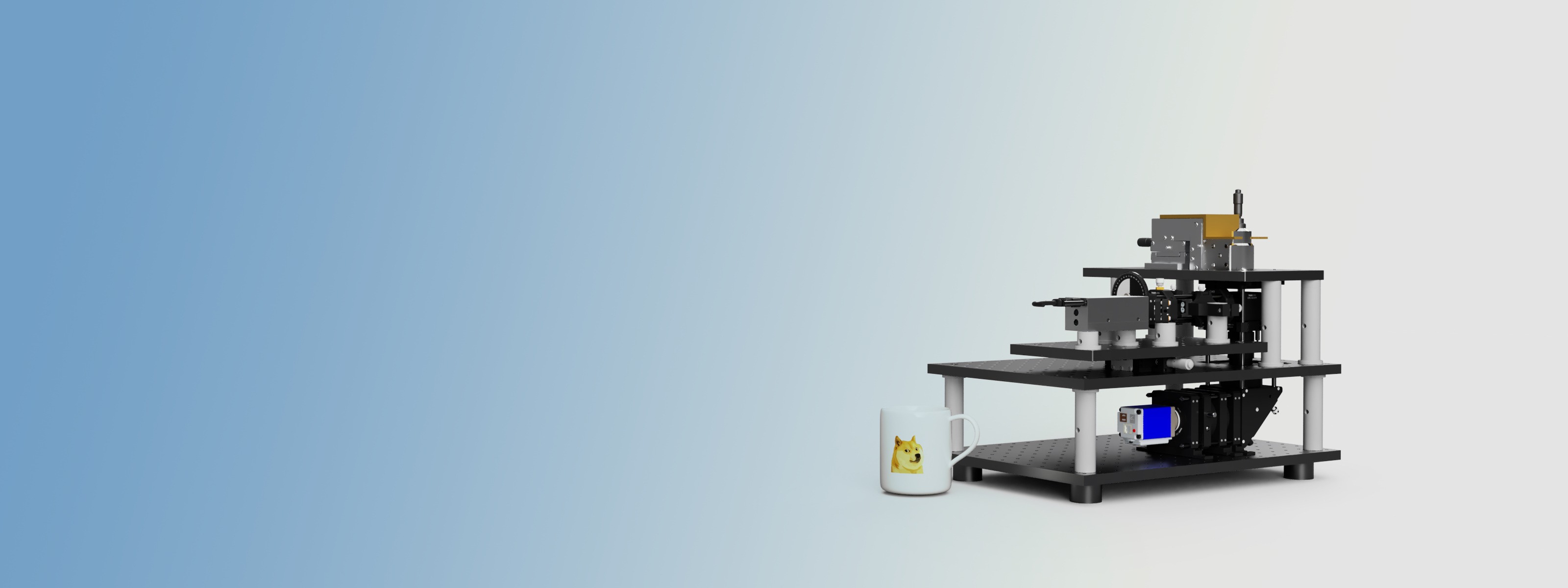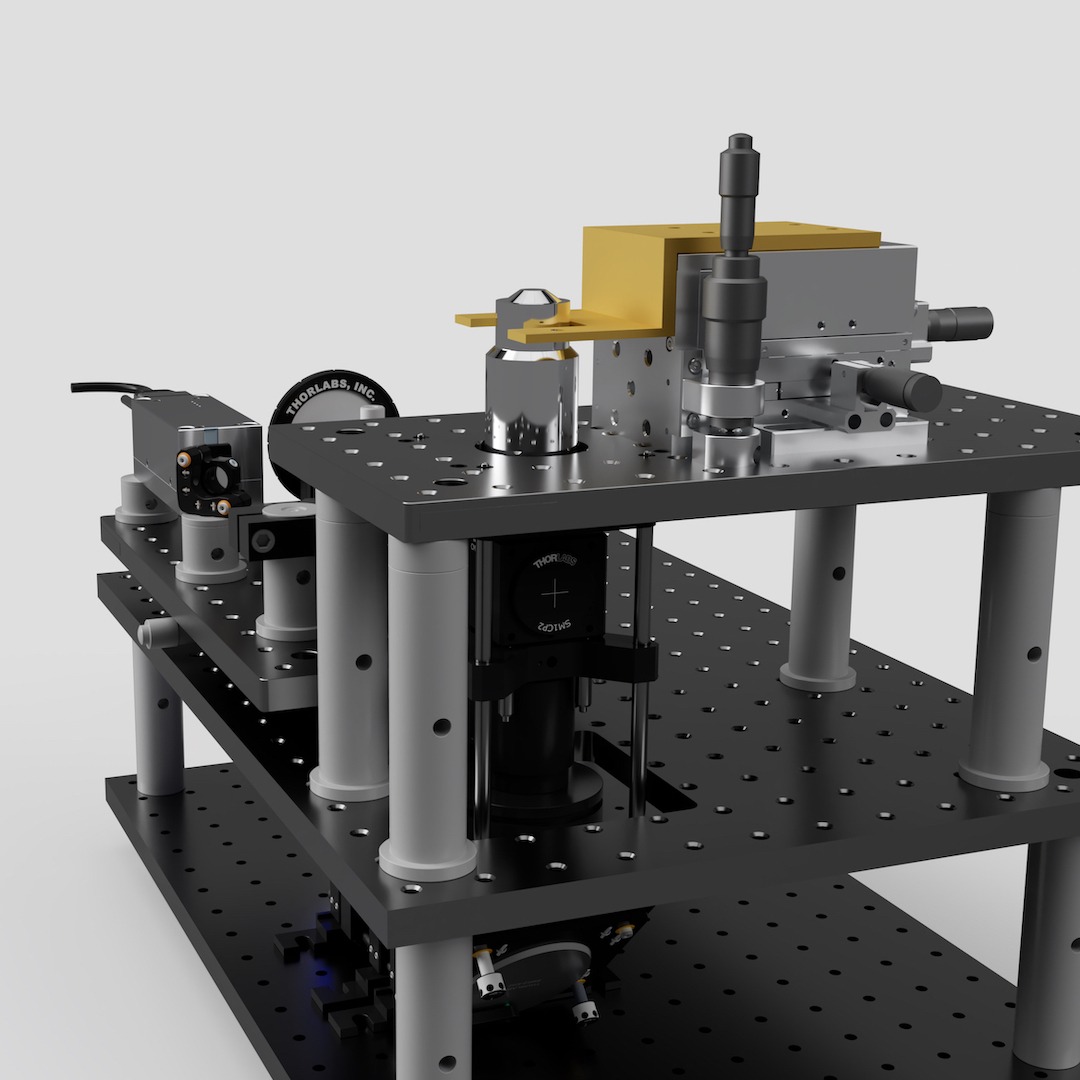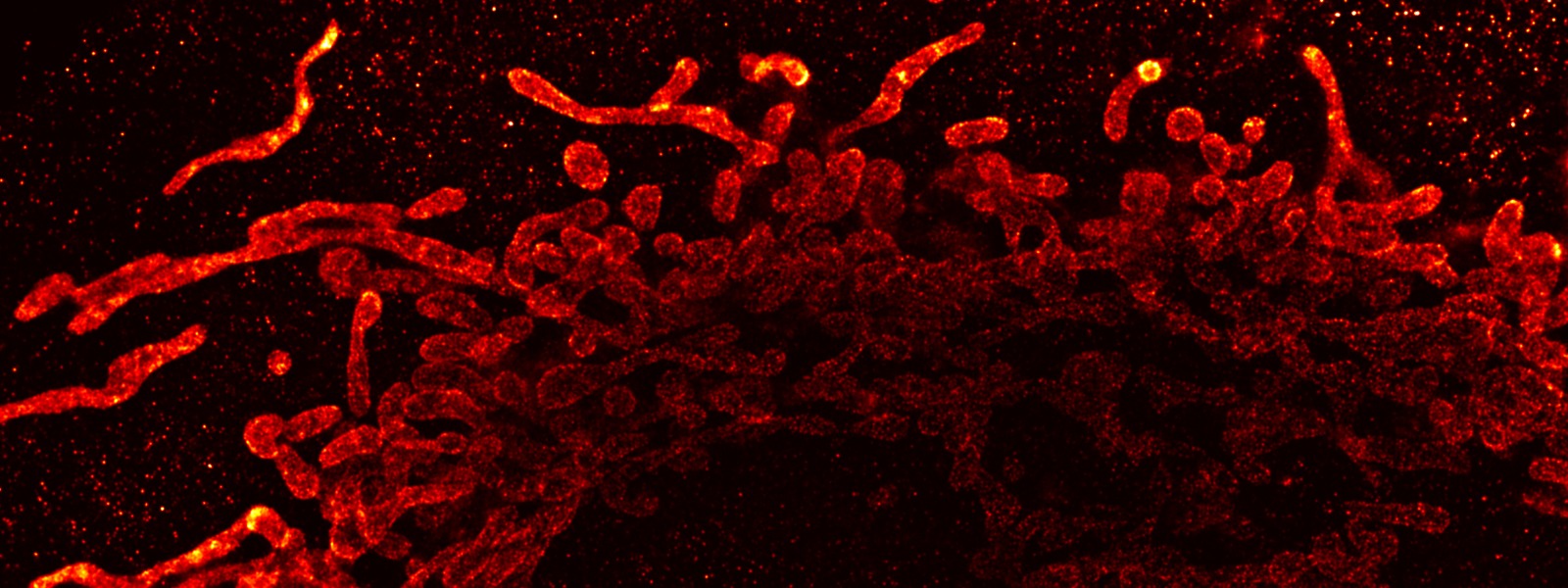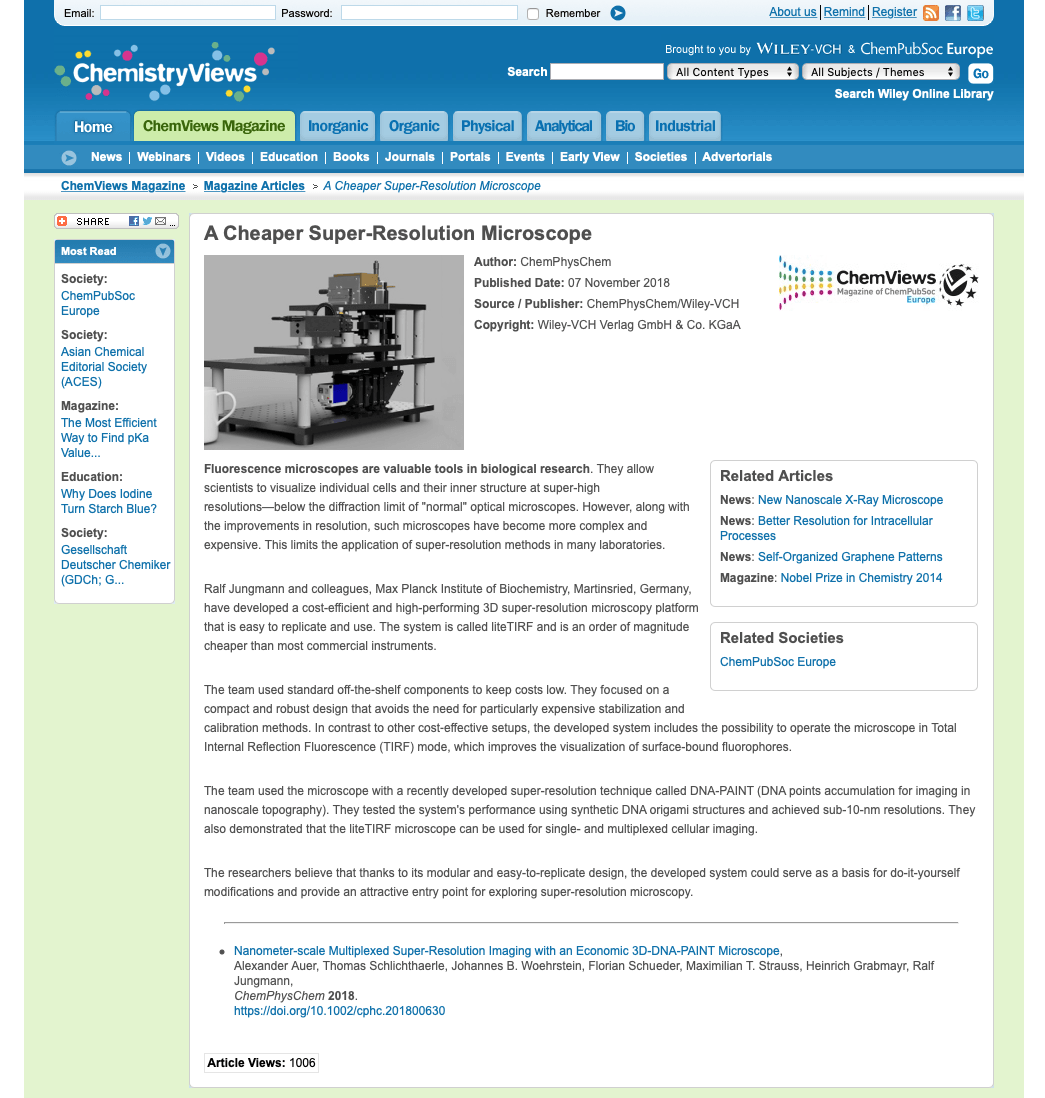LiteTIRF Platform
LiteTIRF Platform
Super-Resolution Microscopy for Everybody
Super-Resolution Microscopy for Everybody

The Motivation
The Motivation
Novel super-resolution techniques enable researchers to perform fluorescence microscopy at unprecidented spatial resolution, allowing the visualisation of inidivual protein-complexes in a single cell. New developments with larger and more complex microscope systems are pushing this frontier every day.
Novel super-resolution techniques enable researchers to perform fluorescence microscopy at unprecidented spatial resolution, allowing the visualisation of inidivual protein-complexes in a single cell. New developments with larger and more complex microscope systems are pushing this frontier every day.
The Problem
The Problem
This leaves behind reasearchers who can not effort these expensives machines. Price tags for commercial microscope systems can reach up a million, usually hundreds of thousands.
This leaves behind reasearchers who can not effort these expensives machines. Price tags for commercial microscope systems can reach up a million, usually hundreds of thousands.
The Idea
The Idea
From the start we wanted to craft an effordable, easy-to-use microscope platform with high performance and low maintenance. Replication should be hassle-free and without the need of an in-depth experise in optics.
From the start we wanted to craft an effordable, easy-to-use microscope platform with high performance and low maintenance. Replication should be hassle-free and without the need of an in-depth experise in optics.


Challenges
Challenges
Challenges
Economic Design for High Performance
Economic Design for High Performance
Economic Design for High Performance

Stability
Stability
Compact design provides a rigid and low-maintenance basis.
We knew to pay special attention to the sample stage in combination with the objective mount. External vibration can be damped with absorbing rubber-feet.
Compact design provides a rigid and low-maintenance basis.
We knew to pay special attention to the sample stage in combination with the objective mount. External vibration can be damped with absorbing rubber-feet.
Compact design provides a rigid and low-maintenance basis.
We knew to pay special attention to the sample stage in combination with the objective mount. External vibration can be damped with absorbing rubber-feet.
Flexibility
Flexibility
Research varies from project to project. With a layer-by-layer design, we could enable scientists to modify the LiteTIRF for their specific needs. Optical cage systems facilitate easy changes to optical paths.
Research varies from project to project. With a layer-by-layer design, we could enable scientists to modify the LiteTIRF for their specific needs. Optical cage systems facilitate easy changes to optical paths.
Components
Components
We envisioned the LiteTIRF as affordable as possible. Therefore we wanted to use mainly off-the-shelf components. To achieve high performance, we screened for components such as cameras and lasers while still balancing the total budget.
We envisioned the LiteTIRF as affordable as possible. Therefore we wanted to use mainly off-the-shelf components. For high performance, we screened for components such as cameras and lasers while still balancing the total budget.

Supervision
Ralf Jungmann
Technical and Experimental Help
Thomas Schlichthaerle, Johannes Woehrstein, Florian Schueder, Maximilian T. Strauss, Heinrich Grabmayr






